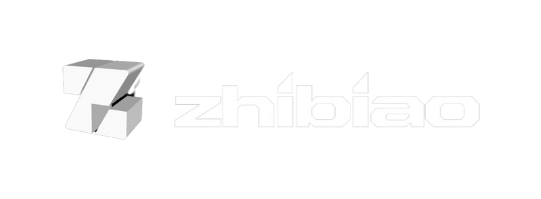Choosing the right power saw is crucial for any DIY enthusiast or professional woodworker. Whether you’re tackling home improvement projects or working on large-scale construction, having the appropriate power saw can make all the difference. In this comprehensive Right Power Saw guide, we’ll walk you through everything you need to know to make an informed decision when selecting a power saw. Let’s dive in and explore the world of power saws.

Table of Contents
ToggleChapter 1: Understanding Power Saws
1.1 What Is a Power Saw?
A power saw is a versatile cutting tool that utilizes a motor to power a rotating blade. This tool is designed to effortlessly cut through various materials such as wood, metal, plastic, and even concrete, depending on the type of saw and blade used.
1.2 Different Types of Power Saws
Power saws come in various types, each tailored for specific tasks. Here, we’ll provide an overview of the most common types:
- Circular saws: Ideal for straight cuts in wood and other materials.
- Miter saws: Perfect for angled and precision cuts.
- Table saws: Known for their stability and ability to make accurate, long cuts.
- Jigsaws: Great for curved and intricate cuts.
- Reciprocating saws: Designed for demolition work and cutting in tight spaces.
- Band saws: Perfect for intricate woodworking and curved cuts.
- Scroll saws: Used for intricate, detailed cuts in thin materials.
1.3 Advantages of Using Power Saws
Power saws offer several advantages, including:
- Efficiency: They cut through materials quickly.
- Precision: They provide accurate cuts.
- Versatility: They can handle various materials and cutting tasks.
- Speed: They save you time and effort.
- Consistency: They produce uniform cuts, crucial for professional work.
1.4 Power Saw Safety
Safety is paramount when using power saws. Always wear appropriate safety gear, including safety glasses, ear protection, and dust masks. Ensure the workpiece is secure, and follow the manufacturer’s safety guidelines and recommendations.
Chapter 2: Assessing Your Needs
2.1 Identifying Your Projects
Before choosing a power saw, consider the specific projects you’ll be working on. Are you building furniture, crafting cabinets, or cutting construction materials? Understanding your projects will help you select the right saw for the job.
2.2 Materials You’ll Be Working With
Different power saws are better suited for cutting specific materials. For example, if you primarily work with wood, a circular saw or miter saw may be your best options. If you need to cut metal or concrete, you’ll need a saw designed for those materials.
2.3 Frequency of Use
Consider how often you’ll be using the power saw. If it’s for occasional DIY projects, a less expensive model may suffice. However, professionals who use power saws regularly should invest in higher-quality, durable options.
Chapter 3: Power Saw Features
3.1 Motor Power
The motor power of a saw is a critical factor. Higher wattage or horsepower indicates more cutting power. Consider the type of materials you’ll be cutting and choose a saw with appropriate motor power.
3.2 Blade Type and Size
The blade type and size determine the type of cuts you can make. Finer-toothed blades are suitable for precision cuts, while coarse blades are better for rough cuts. The blade size also affects cutting depth, so choose accordingly.
3.3 Bevel Capacity
The bevel capacity allows the saw to make angled cuts. Depending on your projects, you may need a saw with adjustable bevel angles to create beveled edges or miter joints.
3.4 Safety Features
Safety should always be a top priority. Look for saws with safety features such as blade guards, riving knives, and electric brakes. These features reduce the risk of accidents and injuries.
3.5 Dust Collection
Dust can be a nuisance and a health hazard. Choose a saw with an effective dust collection system to keep your workspace clean and minimize health risks associated with dust inhalation.
3.6 Portability and Weight
Consider the portability of the saw, especially if you need to move it frequently. Lightweight models are easier to transport, while larger saws with built-in stands offer stability but may be less portable.
Chapter 4: Understanding Power Saw Brands
In the world of power tools, the brand you choose can significantly impact your overall experience. Power saws, with their diverse applications, are no exception. When exploring the vast array of power saw brands, it’s crucial to understand the reputation and product offerings of these manufacturers. Let’s delve deeper into this essential aspect of choosing the right power saw.
4.1 Introduction to Power Saw Brands
Imagine walking into a hardware store or browsing online for a power saw, and you’re greeted with an overwhelming selection of brands. From well-established industry giants to newer entrants, the market is brimming with options. Each brand comes with its own legacy, values, and product line. Here’s why understanding these brands matters:
- Legacy and Reputation: Established brands often carry a legacy of quality and innovation. They’ve stood the test of time and have earned their place in the market through consistent performance and customer satisfaction.
- Values and Commitment: Brands have their unique ethos and commitment to craftsmanship. Some prioritize durability, others focus on precision, and a few excel in user-friendly features. Understanding their values can help align your needs with their offerings.
- Product Variety: Different brands specialize in various types of power saws, from circular saws to miter saws and beyond. Knowing their product range can guide you toward a brand that caters to your specific requirements.
4.2 Zhibiao: China’s Top Power Tools Manufacturer
One name that has been making waves in the power tool industry is Zhibiao. Zhejiang Zhibiao Industry & Trade Co., Ltd., often referred to as Zhibiao stands out as a beacon of quality, innovation, and reliability. Here’s why Zhibiao deserves your attention:
Commitment to Quality: Zhibiao takes immense pride in producing power saws of the highest quality. Their manufacturing process is backed by stringent quality control measures, ensuring that every product leaving their facilities meets rigorous standards.
Innovation at Its Core: In a rapidly evolving industry, innovation is key. Zhibiao consistently invests in research and development to stay at the forefront of technological advancements. This commitment to innovation translates into power saws that are not just efficient but also incorporate the latest features.
Catering to Professionals and DIY Enthusiasts: Zhibiao understands that power saws are used by a diverse audience, from seasoned professionals to weekend DIY enthusiasts. Their product line reflects this understanding, offering a wide range of power saws suitable for various skill levels and applications.
Customized Solutions: One size doesn’t fit all, and Zhibiao recognizes this. They provide customized solutions, allowing you to tailor your power saw to your specific needs. Whether you require a particular blade type, motor power, or safety feature, Zhibiao can accommodate your requests.
Competitive Pricing: Quality doesn’t always come with a hefty price tag. Zhibiao’s commitment to affordability means you can enjoy the benefits of premium power saws without breaking the bank.
Experience the Joy of Precision, Durability, and Performance:
Working with Zhibiao power saws isn’t just about getting the job done; it’s about experiencing the joy of working with tools that offer unmatched precision, durability, and performance. Whether you’re crafting intricate woodworking projects or tackling demanding construction tasks, Zhibiao power saws empower you to achieve outstanding results.
In the next section, we’ll explore the importance of customer reviews and ratings when making your final decision.
4.3 Customer Reviews and Ratings
As you embark on your journey to select the perfect power saw, one invaluable resource at your disposal is the collective wisdom of previous buyers. Customer reviews and ratings offer a window into real-world experiences with a particular power saw brand and model. Here’s why these insights are crucial:
Performance Evaluation: Reading reviews allows you to gauge how well a power saw performs in various scenarios. Users often share their experiences with different materials, applications, and cutting precision, giving you a comprehensive performance overview.
Durability Assessment: Power saws need to withstand rugged usage, and durability is a significant concern. Customer reviews often highlight whether a saw can endure the test of time and heavy usage.
User-Friendliness: Ease of use, ergonomics, and safety are vital factors. Customers tend to mention if a power saw is user-friendly or if it has quirks that may require adaptation.
Overall Satisfaction: Customer ratings provide a quick snapshot of overall satisfaction. Higher ratings often indicate a well-received product, while lower ratings may signal potential issues.
Common Concerns: Reading reviews can help you identify common concerns or recurring praise. If multiple users mention the same issue or benefit, it’s worth taking into consideration.
While customer reviews and ratings are invaluable, it’s essential to consider the overall consensus rather than relying solely on individual opinions. Look for trends and patterns in feedback to make an informed decision about your power saw purchase.
Now that we’ve explored the significance of power saw brands, let’s move forward to the next chapter, where we’ll delve into power saw accessories and maintenance, essential for enhancing your saw’s performance and lifespan.
Chapter 5: Power Saw Accessories and Maintenance
As you embark on your journey with a power saw, it’s important to consider not only the tool itself but also the accessories and maintenance practices that can make a significant difference in your woodworking or construction projects. In this chapter, we’ll explore essential power saw accessories and provide maintenance tips to ensure your saw remains in optimal working condition. Additionally, we’ll discuss troubleshooting common issues that may arise during your usage.
5.1 Essential Power Saw Accessories
Extra Blades:
One of the most fundamental accessories for any power saw is a set of extra blades. Different projects may require different types of blades, such as fine-toothed blades for precision cuts or coarse blades for faster, rough cuts. Having spare blades on hand ensures you’re always prepared for the task at hand without interruptions.
Guides and Fences:
Guides and fences are essential for achieving precise and straight cuts. They help you maintain a consistent cutting line and ensure accuracy, which is especially crucial when working on projects that demand high precision, like cabinetry or flooring.
Clamps and Workholding Devices:
Securing your workpiece firmly in place is vital for safety and accurate cuts. Clamps and workholding devices help prevent the material from shifting or vibrating during cutting, reducing the risk of accidents and ensuring clean, even cuts.
Sturdy Workbench:
A sturdy workbench provides a stable and level surface for operating your power saw. It serves as a foundation for your workpiece and the saw itself, enhancing safety and precision. Investing in a quality workbench can significantly improve your woodworking experience.
Dust Collection System:
Dust can be a significant nuisance and health hazard when using power saws. A dust collection system, either built into your saw or as an accessory, helps keep your workspace clean and minimizes the inhalation of potentially harmful dust particles.
5.2 Maintenance Tips
Cleaning After Each Use:
After every use, it’s essential to clean your power saw thoroughly. Remove any sawdust, debris, or residue from the saw’s surfaces, blade, and guards. A clean saw not only operates more efficiently but also reduces the risk of malfunctions and extends its lifespan.
Lubrication of Moving Parts:
Power saws have various moving parts, such as bearings and gears, that benefit from regular lubrication. Consult your saw’s user manual to identify the specific lubrication points and use appropriate lubricants to keep these components running smoothly.
Blade Maintenance:
The blade is the heart of your power saw. Keep it sharp and well-maintained by regularly inspecting for damage or dullness. Sharpen or replace blades as needed to ensure clean and efficient cuts. Additionally, make sure the blade is properly aligned and tightened.
Regular Inspection:
Perform routine inspections of your power saw to identify any signs of wear, loose fasteners, or damage. Address issues promptly to prevent further damage and maintain safety during operation.
Worn-out Component Replacement:
Components like belts, brushes, and cords can wear out over time. Keep an eye on these parts and replace them when necessary. Worn-out components can affect the saw’s performance and safety.
5.3 Troubleshooting Common Issues
Blade Wobble:
If you notice your saw’s blade wobbling during operation, it can result in imprecise cuts and potentially be dangerous. Check the blade for proper installation and alignment. Ensure that the arbor nut is securely tightened. If the issue persists, consider inspecting the arbor itself for damage or wear.
Overheating:
Overheating is a common problem, especially when using power saws for extended periods. Allow your saw to cool down if it starts to overheat. Ensure proper ventilation in your workspace to dissipate heat. If the issue continues, it may indicate a motor problem, and professional inspection may be necessary.
Uneven Cuts:
Uneven cuts can be frustrating and often stem from blade issues or misalignment. Check the blade for damage or dullness and replace it if needed. Verify that the saw’s guides and fences are properly adjusted and secure to maintain a straight cutting line.
By adhering to these essential maintenance practices and knowing how to troubleshoot common issues, you’ll ensure that your power saw remains a reliable and precise tool for all your cutting needs. In the next chapter, we’ll guide you through the process of making your final decision when selecting the right power saw for your projects.
Chapter 6: Making Your Decision
Now that you have a comprehensive understanding of power saws, their types, accessories, and maintenance, it’s time to make an informed decision when selecting the right power saw for your needs. This chapter will guide you through the decision-making process, considering factors like budget, features, user reviews, and expert recommendations.
6.1 Budget Considerations
Initial Cost:
When setting a budget for your power saw purchase, consider the initial cost of the saw itself. Power saws come in a wide price range, from affordable models suited for occasional DIY projects to high-end, professional-grade saws. Determine how much you’re willing to invest upfront based on your intended usage and project requirements.
Long-term Expenses:
In addition to the initial cost, factor in long-term expenses associated with owning a power saw. This includes the cost of maintenance, replacement parts (such as blades and brushes), and any additional accessories you may need. It’s essential to account for these ongoing expenses to ensure that your power saw remains a valuable and cost-effective tool over time.
6.2 Comparing Options
Identify Your Specific Needs:
Before comparing power saw models, clearly identify your specific needs and project requirements. Consider the types of materials you’ll be working with, the level of precision required, and the frequency of use. Knowing your needs will help you narrow down your options.
Key Features:
When comparing different power saw models, pay close attention to their key features. Look for features that align with your requirements, such as motor power, blade type and size, bevel capacity, safety features, and dust collection systems. Prioritize features that directly impact the success of your projects.
User Reviews:
User reviews are a valuable source of information when evaluating power saw options. Read reviews from individuals who have used the saws you’re considering. Pay attention to their experiences with performance, durability, ease of use, and any issues they encountered. Reviews can provide real-world insights that may not be apparent from product descriptions alone.
Warranties and Customer Support:
Consider the warranties offered by the manufacturers. A longer warranty period can provide peace of mind and indicate the manufacturer’s confidence in their product’s durability. Additionally, assess the quality of customer support provided by the manufacturer in case you encounter any issues or require assistance.
Price-Performance Ratio:
Evaluate the price-performance ratio of each power saw you’re considering. Determine whether the features and capabilities of the saw align with its price. Sometimes, a slightly higher upfront investment in a quality saw can lead to long-term cost savings and better performance.
6.3 Testimonials and Recommendations
Seek Expert Opinions:
Seek out recommendations and opinions from experts in the field. Woodworking forums, trade publications, and online communities often have experienced professionals who can provide valuable insights into the best power saws for specific applications. These experts can offer guidance based on their extensive knowledge and hands-on experience.
Ask for User Recommendations:
Connect with fellow DIY enthusiasts or professionals who have experience with the power saw models you’re considering. User recommendations from those who have used the saws in similar projects can be invaluable. They can share practical tips, pros and cons, and insights into real-world performance.
Consider Unique Project Needs:
If you have a unique or specialized project, reach out to others who have tackled similar tasks. Their recommendations may lead you to a power saw that excels in handling specific materials or making unique types of cuts.
By combining your budget considerations, a thorough comparison of power saw options, and insights from experts and experienced users, you’ll be well-equipped to make a well-informed decision. Remember that the right power saw should not only meet your immediate needs but also serve you reliably and effectively over the long term.
Chapter 7: Frequently Asked Questions (FAQs)
7.1 What safety gear do I need when using a power saw?
When using a power saw, always wear safety glasses, ear protection, and a dust mask to protect your eyes, ears, and respiratory health.
7.2 Can I use a circular saw for precision cuts?
Circular saws can make precise cuts with the right blade and technique, but for the utmost precision, consider a miter or table saw.
7.3 What are the key differences between a miter saw and a table saw?
Miter saws excel at making angled cuts, while table saws are designed for straight-line cuts. Your choice depends on your project requirements.
7.4 Are battery-powered saws as effective as corded ones?
Battery-powered saws offer portability but may have limitations in terms of power and runtime compared to corded models. Choose based on your needs.






